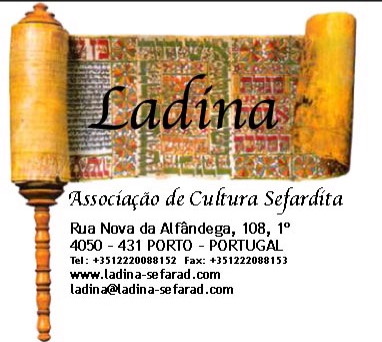500 YEAR OLD KABBALAH STONE LOCATED IN PORTUGAL
HEBREW CHARACTERS IN REVERSE ETCHED ON SLATE STONE TO CREATE A MASTER MOULD
500 YEAR OLD KABBALAH STONE LOCATED IN PORTUGAL
mlopesazevedo
Part I
Following a circuitous search, a 500-year-old Kabbalah
stone has been located in an obscure village museum in
Portugal. The grey-black slate stone, of a trapezoid
shape and about the thickness of a finger fits on an
extended hand. It is engraved with a disc about the
size of an American coffee cup and contains a square
the size of an average letter stamp within the disk.
The square is further divided into nine smaller
squares containing Hebrew lettering. Surrounding the
square on all sides there is additional Hebrew
writing. The Hebrew characters have been etched in
reverse into the slate to create a "negative" suitable
for making copies in wax, clay or plaster.
The engraving is in remarkably good condition.
The writing within the square has been deciphered as a
series of numbers, namely,
8 1 6
3 5 7
4 9 2
totalling 15, regardless of how the numbers are added
up. This type of square is known as a "magic square".
The Hebrew characters surrounding the
square on all sides have not yet been definitively
interpreted.
The stone may have been an amulet or perhaps a
Kabbalistic seal. Further research is being conducted.
From an anonymous source:
"The number 15 is composed of the letters 'yud' with a
gamatria of 10 and the letter 'hay' with gamtria of 5.
yud & hay form G-d's name.
There were 15 steps leading up to the Holy of Holies
in the Temple, and the Levites would sing songs on each
one.
The priestly blessing contains 15 words.
The numbers 7 plus 8 equals 15. Seven represents nature,
time, and the days of the week. Eight represents the
spiritual world, Brit Milah a covenant with G-d.
Together they form the physical and spiritual realms."
(see also amulet exhibition, Yale University library,
http://www.library.yale.edu/judaica/exhibits/asch/pages/amulets.html)
In addition to the stone, a bronze Hamsa or
Khamsa, a hand shaped amulet and lever were found
nearby. The Hamsa, an open hand with the wrist resting
on an arc with two fleur de lis flowers at each end,
has a keyhole and a hole in the middle of the palm,
perhaps to secure it to a door.
The Hamsa, somewhat smaller than the stone, has a
small Hebrew inscription that has been interpreted as
G_d Omnipotent. There is also a small bronze scoop, or shovel
about the size of a thumb.
(see http://www.templeinstitute.org/vessels_gallery_10a.htm)
The bronze lever is about the length
of four average fingers and has a Magen David attached
to it by a swivel.
According to Vanessa Paloma (www.flordeserena.com ),
the bronze Hamsa, has "Gd's name... on the back side
of the mezuzah. (Sha - dai).
It's the name that represents giving--it's also connected
to the Hebrew word for breast. So, it has to do with
Gd's giving to us like a mother gives breast milk...
It would make sense to have that name on this object
if it's on a door because of the mezuzah presence too."
According to another source,
" Hamsa means five. On the amulet is the word Shaddai.
The letters shin - dalet- yud. It's the name used
in the Torah for G-d prior to G-d revealing himself
to Moses at the burning bush. Then g-d's name is
Yaweh - Yud-Hay- Vov-Hay. Shaddi also stands for
Shomer Deldot Yisreal - Watch Over the Doors of Israel.
The bottom of the amulet looks like a shovel,
which was used to remove the sacrificial ashes
from the alter in the temple. It was a popular
religious symbol for the Temple in earlier times,
much like the Chai and Star of David
is used today."
This Kabbalah stone artifact is unique in Portugal, perhaps
Sepharad, perhaps the world!
Pictures of the stone, Hasma, key and lever can be
viewed at www.ladina.blogspot.com.
(Part II, what,who, how and where the stone was found;
Part III, Where the stone may be viewed)






